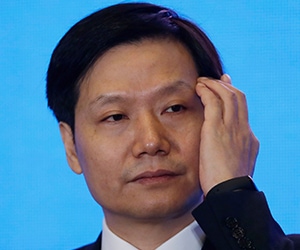Billed as potentially the biggest IPO since Alibaba, Xiaomi's IPO comes up short.
Beijing-based smartphone manufacturer Xiaomi priced on Friday June 29 in Hong Kong, its long-awaited initial public offering (IPO). But the final outcome was far from what the company had been aiming for in the long lead up to the deal as one of the hottest topics among China-focused investors.
The company sought to raise US$10bn-equivalent via a dual class equity structure, but downsized this to a less sensational US$6.1bn (HK$48bn) at the top of an indicated price range of HK$17-HK$22 in the run up to pricing.
Xiaomi’s original plan to simultaneously list Chinese Depositary Receipts (CDR) in Shanghai was put on ice, with the deal’s lead arrangers deciding to wait for the Hong Kong trade to clear before tapping the mainland China market.
That decision prompted criticism from market players for confusing the price discovery process on both proposed trades.
In addition, there were fears that the Chinese financial authorities’ desire to super-charge the newly-created—and untested—CDR market might open the floodgates to a wave of China issuance, particularly from the tech sector via which China hopes to promote onshore equity listing.

Jun Lei, Founder, Chairman, and CEO of Jun Lei |
These criticisms were arguably well-founded, with potential investors in the Hong Kong IPO apparently nervous that in the midst of a burgeoning trade war between the US and China, not only would the initial listing run the risk of trading down after pricing, but that the added drag of a subsequent CDR listing would further pressure the Hong Kong paper.
Adding to the problems surrounding Xiaomi’s CDR plan was the apparent insistence that the CDR portion exceed that of the Hong Kong listing and be marketed at a lower valuation. The company hoped to appeal to onshore retail investors who make up the bulk of the Shanghai equity market with an eye to encouraging a price surge when the paper went free to trade.
In the event, Xiaomi’s Hong Kong IPO priced at the bottom of the range, raising US$4.7bn-equivalent, valuing the company at US$54.3bn after the partial exercise of a 15% greenshoe option. That is far less than the US$100bn the company was supposed to be valued at when the deal was first rumored in late February.
Moreover, an IPO onslaught is in the works, with around US$15.4bn of China issuance in the pipeline for July via some 15 issuers. Global equity market volatility and fears that the trade war rhetoric will ramp up—contributing to deteriorating market conditions—have prompted potential issuers to bring forward their issuance plans.
Critical ballast to the Xiaomi IPO was provided by commitments from seven cornerstone investors who stumped up to the tune of US$550m. Hedge fund titan George Soros, Hong Kong’s richest man Li Ka Shing, Alibaba founder Jack Ma, Tencent chairman Pony Ma, private equity group Hillhouse Capital and China Mobile circled tickets for the deal in a telling vote of confidence in the smartphone maker.
Still, retail demand, at 8.5 times cover for the planned US$6.1bn, was something of a pittance in comparison to Ping An Good Doctor’s and auto retailer Yixin’s IPOs which were each covered 650 and 560 times, respectively.
But those deals represent the result of surging global equity markets at the start of the year and the frenzied desire on the part of retail investors to flip quick profits on IPO paper. More than one-half of the approximately 90 companies that have tapped the Hong Kong market this year have seen the value of their equity dip below IPO price, something that potential retail investors in Xiaomi’s offering will have been keenly aware of.



